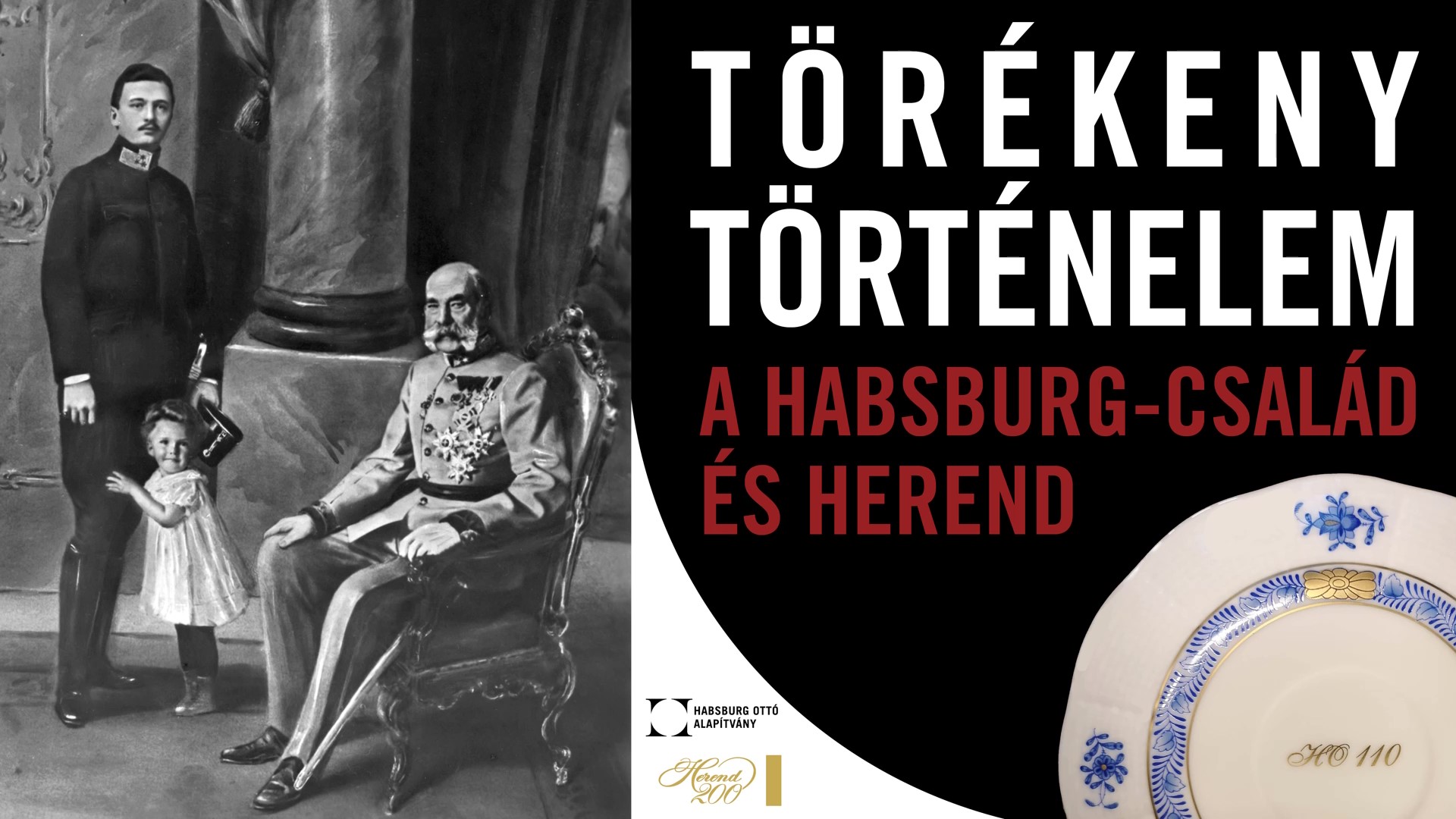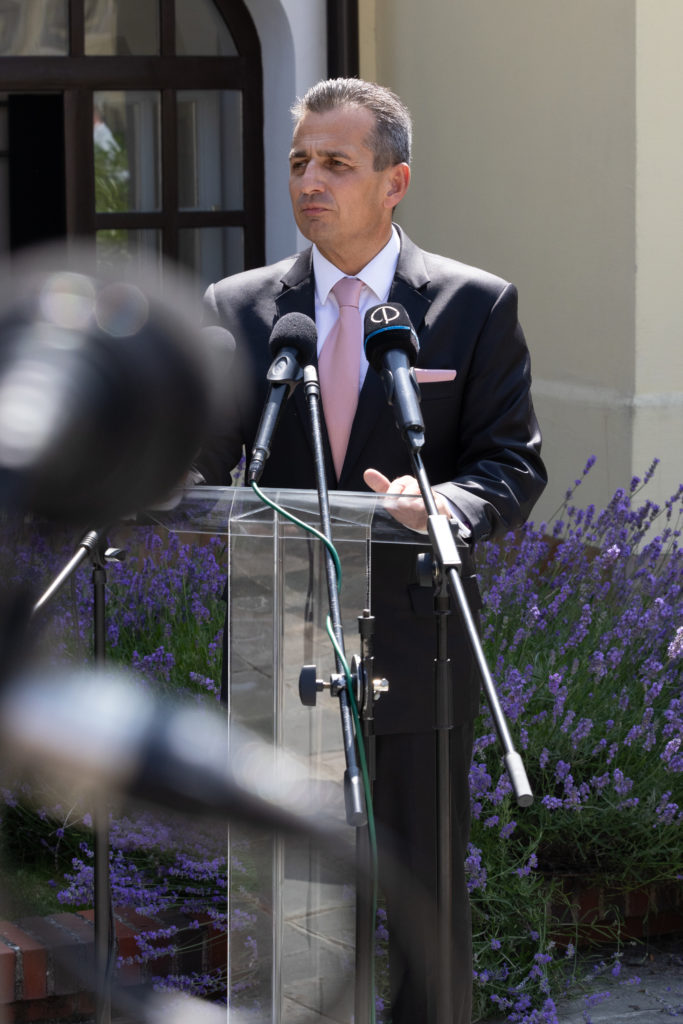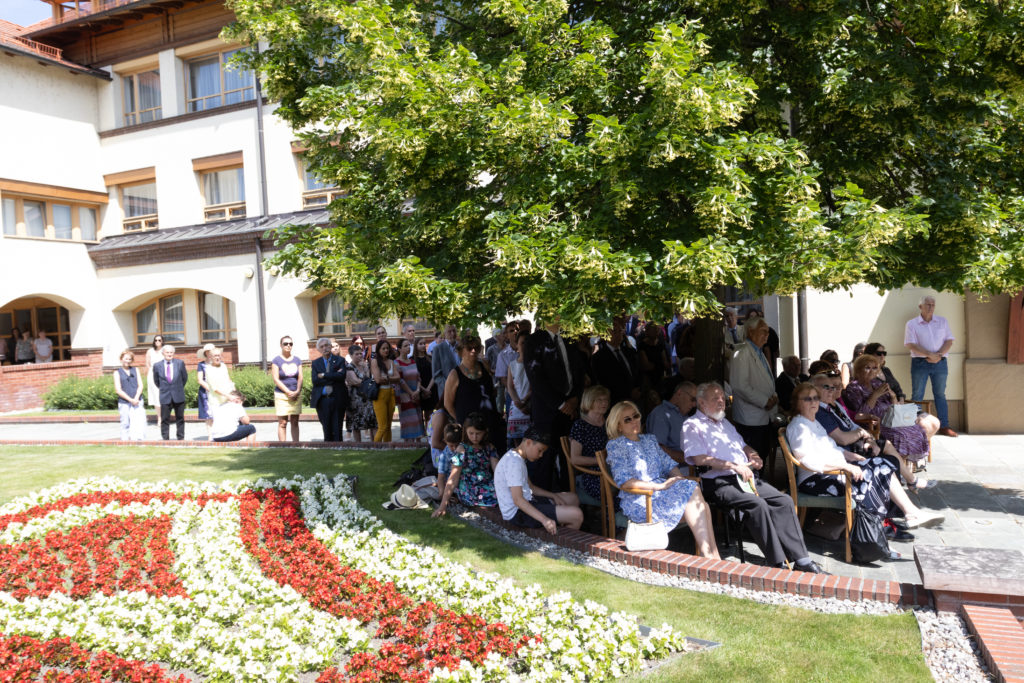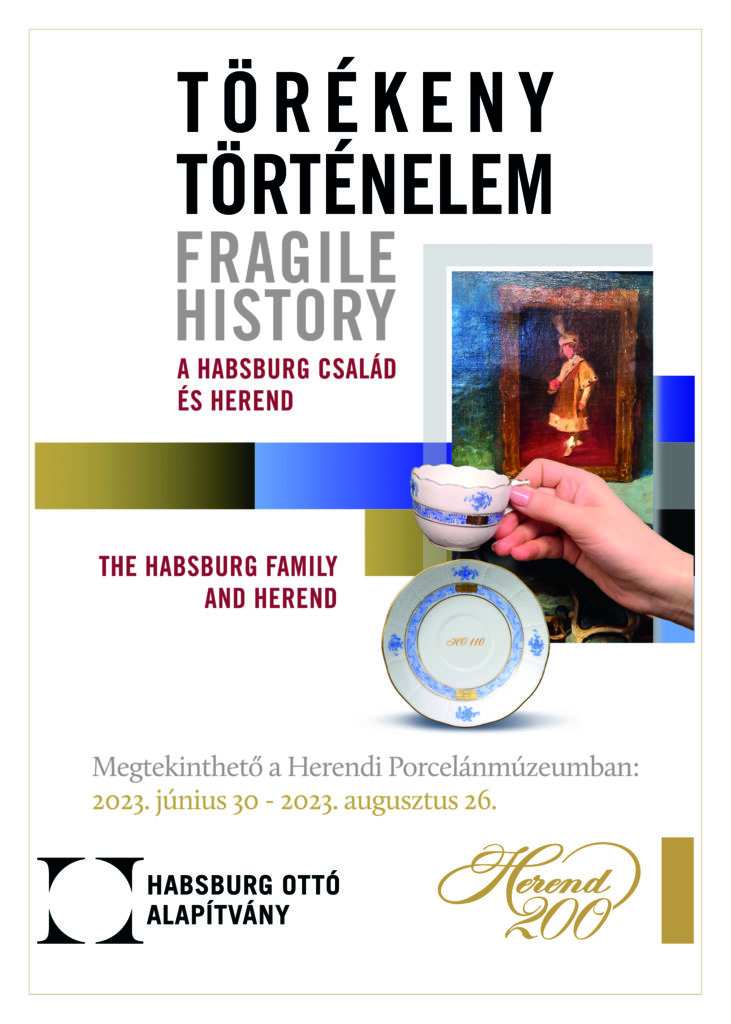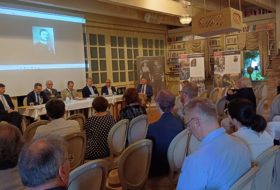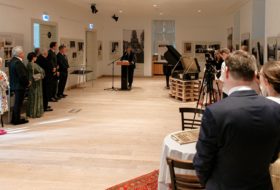Tibor Navracsics, Minister of Regional Development, said in his welcoming speech that porcelain made Herend famous and recognised throughout the continent and even the world, and the work of the Manufactory, spanning two centuries, is a worthy addition to our cultural heritage. He highlighted that Herend porcelain embodies both European values in Hungary and Hungarian values in Europe.
The CEO of the Herend Porcelain Manufactory, Attila Simon, recalled the prosperous times and influential leaders following the foundation of the company in 1826, who all contributed to the distinctive image that made the porcelain of Herend famous worldwide. The Manufactory is now unrivalled in the market for handmade porcelain and has been a Hungaricum since 2013.
Gergely Prőhle, Director of the Otto von Habsburg Foundation, remarked: the Herend brand elevates everyone, creates festivity, radiates spirituality and is rightfully the national pride of Hungary. The title of the exhibition, he explained, refers not only to the fragility of porcelain but also to the history and position of the nations of Central Europe, which demands that the people of the region and its decision-makers act with due caution, as demonstrated by the life and thoughts of Otto von Habsburg.
Presenting the exhibition, István Gergely Szűts, Senior Archivist of the Otto von Habsburg Foundation, stated that the exhibition primarily focuses on the period between the coronation of Charles IV in 1916 and Otto von Habsburg’s visit to Hungary in 2007. Among other things, it includes a contemporary photograph of the coronation banquet, where Herend porcelain was presumably used to set the table. The archivist noted that Otto von Habsburg lived in exile for 70 years and was not allowed to visit Hungary. However, between 1923 and 1945, on the occasion of his birthday, with the participation of legitimist politicians, dinners were organised, at which the tables were also set with Herend Porcelain.
In 1987, Otto von Habsburg returned to Hungary as a private citizen; in 1989 was here as a Member of the European Parliament, and in 2007 his 95th birthday was celebrated in Herend. These occasions are also commemorated in the exhibition, pointed out István Gergely Szűts. He added that the display also includes some of the items from the Otto von Habsburg Foundation’s collection, such as the prayer book, rosary, typewriter, and bowler hat of Otto von Habsburg, as well as the kneeling cushion used at the coronation of Charles and Zita.
The Habsburg dynasty had a decisive role in the almost 200-year history of the Herend Porcelain Manufactory; therefore, our exhibition also highlights some important connections from the period before the reign of Charles IV. Emperor and King Franz Joseph I ordered sets from the factory on several occasions. One for his wife, Queen Elisabeth, to the Royal Palace of Gödöllő with a Chinese-style pattern, which has since become known as the Gödöllő pattern. In the first third of the 1870s, the Emperor also commissioned a monogrammed porcelain set of some 4,000 pieces for the Royal Palace of Buda, which could have been seen later by the young heir to the throne, Otto von Habsburg at his father’s coronation.
The thematic exhibition, illustrated by the famous Herend porcelains mentioned above, pays tribute to the Habsburg family’s long and decisive role in the history of the region while it also recalls the critical milestones of the life of the last heir to the throne, Otto von Habsburg, to whom his Hungarian identity was just as important as being a committed European.
The exhibition is open until August 26, 2023 at the Herend Porcelain Museum.
Photos: Herend Porcelain Manufactory
